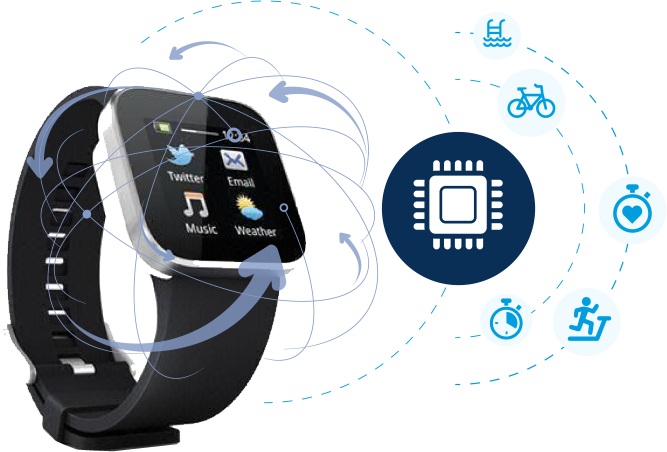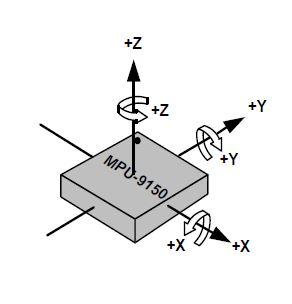Things to Consider / Parameters
Activity Recognition
This is one of the key underlying technologies required to make these ideas come to life and this is where motion interface plays a critical role. Activity recognition is the identification of personal activities by analyzing a user’s motion. It uses trained data from the user, then compresses the data into a decision tree format that can be used to identify when the activity occurs again in the future. Simply put, activity recognition allows a wearable sensor device to track your activities without the user having to tell the device that he or she is switching from jogging to playing basketball to swimming. To learn more please refer to this tutorial (Link Activity Recognition Tutorial)
Power Consumption
In terms of power consumption, it is possible to build thin, light wearable sensor devices that can broadcast data throughout an entire sporting event or record data through an average day. Using creative power management techniques, it may be possible to further extend battery life. Essentially, not every sensor needs to be powered on at all times. Since some sensors expend more power than others, it is possible to track basic motions with the lowest power sensors, then when a transition in activity is detected, the other sensors are powered up to perform a 10-15 second activity classification. They then are put back to sleep to optimize battery life.
Wearable devices typically run on very low power microcontrollers with limited processing power and memory. To solve this challenge, MotionTracking devices such as the MPU-9150 not only provide sensing, but also embed Digital Motion Processor™ (DMP) hardware capable of algorithm processing that offloads sensor calibration and fusion from the microcontroller. At the same time, MotionTracking devices offer embedded intelligence to present interrupt-driven sensor events to the micro that optimize system efficiency and reduce interrupts and power. This embedded intelligence helps system designers optimize wearable sensor power and performance to match the battery life targets for the specific device.
Form Factor
Whether a wearable sensor is a wristwatch, a pod embedded in a shoe, or a device clipped to a belt, it must be comfortable, unobtrusive, and easy to remove. This means that the device must be small- one of the key factors designers consider when creating a wearable sensor device. As already noted, size constraints mean less space for a bigger battery which means the device must be power efficient and highly integrated. Example, the InvenSense MPU-9150 9-axis MotionTracking device, is simplifying component integration and qualification for wearable sensors that require small form factors by providing all necessary motion sensing elements in a small 4mm x4mm QFN package.
Wireless Connectivity
The enabling force behind the wearable sensor revolution will be ultra-low power wireless connectivity that will transmit data from the wearable device to a phone, tablet, or PC via Bluetooth® smart technology (a lower power version of standard Bluetooth).
“Leveraging mobile handsets to provide automated online data access opens up the wearable wireless market to real-time online connectivity. Although not the only option, standardization around Bluetooth Smart will be the bedrock of this market growth.”- Jonathan Collins, Principal Analyst, ABI Research.
Personal fitness is going social as friends and peer pressure sometimes serve as our best motivator. Did I run further than my friend today? Did he or she beat my time on our favorite mountain biking trail? This data can now be automatically collected and synchronized by smartphones and the wearable device and then uploaded automatically to the cloud allowing information sharing among friends and family bringing a sense of motivation and competition to personal fitness.
This wireless data will also become more prevalent when watching sports. In NASCAR viewers can already see at home the speed of the car, gear selection, and braking metrics. Tennis and soccer have already done similar things thanks to wireless connectivity. Looking into the future, football audiences will be able to see how quickly a running back accelerated, or the g-force generated by a linebacker’s tackle. In baseball, which pitcher has the best mechanics and which batter has the fastest bat speed will be obvious metrics. As you can see, the possibilities are limitless. AAR Library, the same library behind the Sharkband, is now available.



